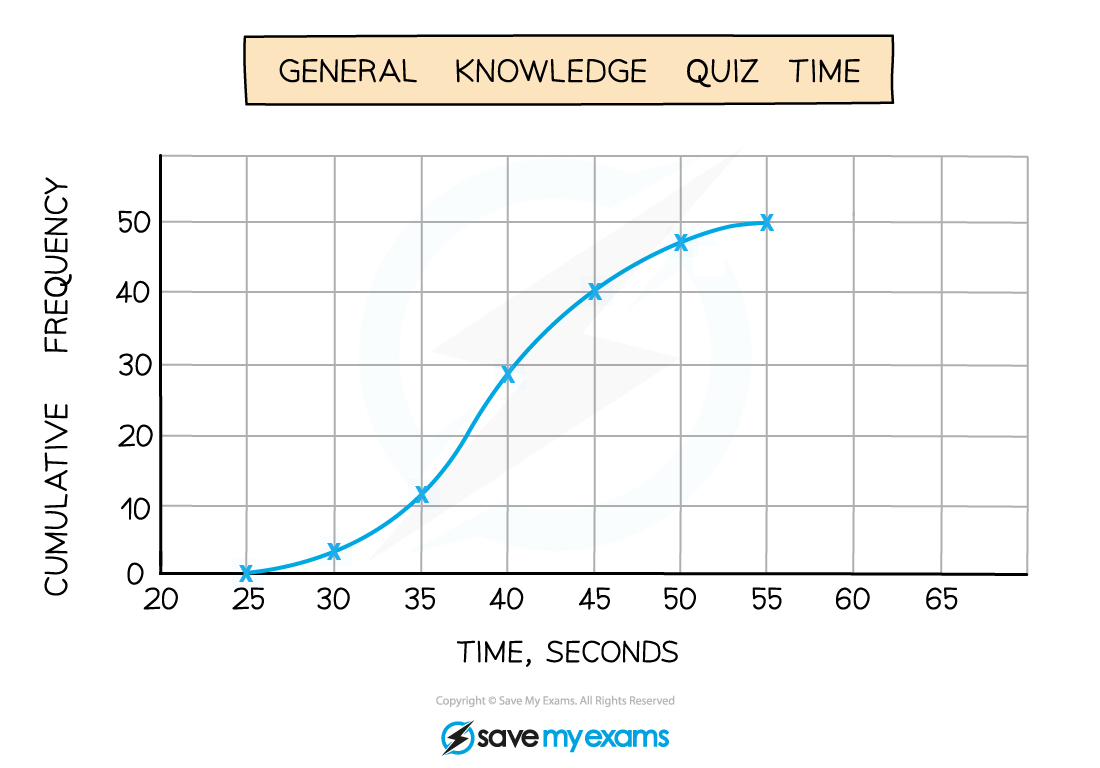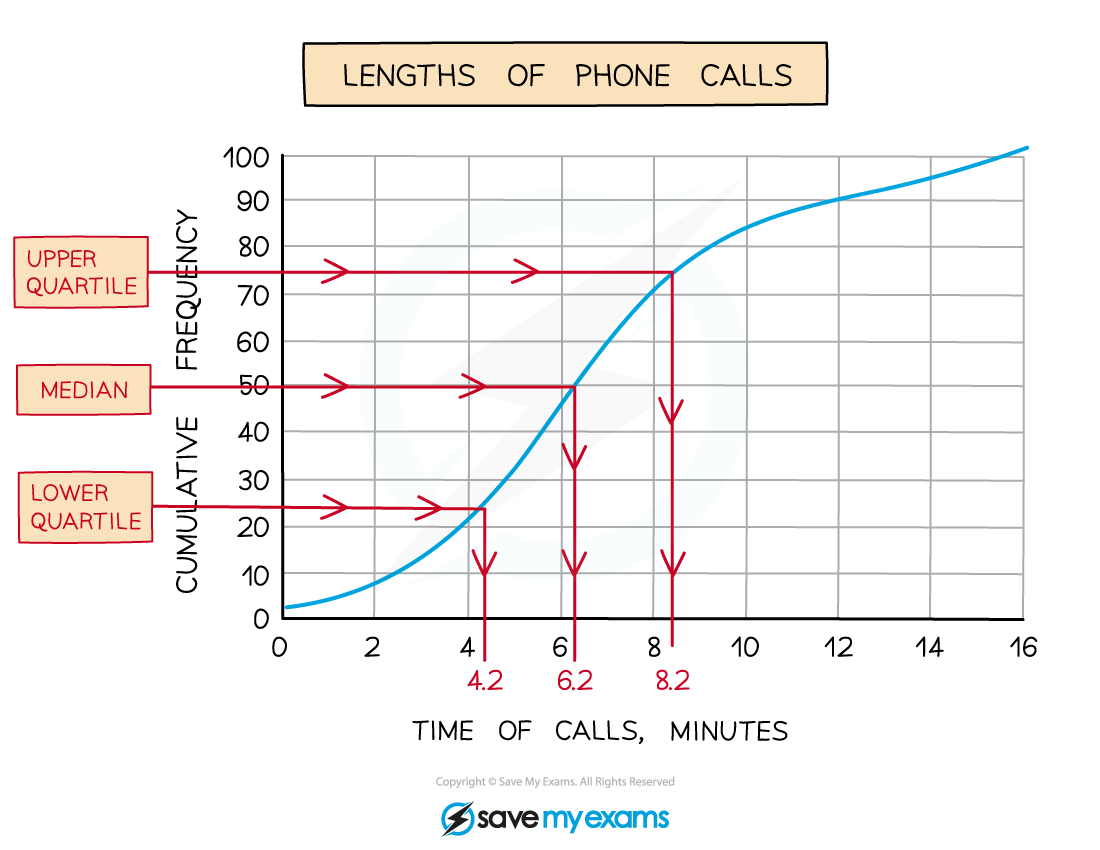Cumulative Graphs (College Board AP® Statistics) : Study Guide
Cumulative graphs
What is cumulative frequency?
Cumulative frequency is the sum of all the different frequencies up to and including a given point
In a frequency table, the cumulative frequency of a row is
the frequency of that row, plus the frequency in the row before, plus the frequency in the row before that... etc.
How do I draw a cumulative graph?
A cumulative graph shows the cumulative frequency on the
-axis instead of the frequency
This is easiest shown with an example
The times taken to complete a short general knowledge quiz taken by 50 students are shown in the table below:
Time taken (
seconds)
Frequency
3
8
17
12
7
3
Total
50
The cumulative frequency is the running total of the frequencies
Time taken (
seconds)
Frequency
Cumulative Frequency
3
3
8
3 + 8 = 11
17
11 + 17 = 28
12
28 + 12 = 40
7
40 + 7 = 47
3
47 + 3 = 50
Total
50
We can now draw the cumulative graph
The most important part is that cumulative frequency is plotted against the end (upper bound) of the interval
Consider the second row (
)
You do not know the exact times of the 8 students in this group
They could have taken any time between 30 and 35 seconds
You know for sure that all 8 students are included by 35 seconds
Points are usually joined up to make a smooth curve
In general, cumulative graphs have a stretched S-shape
A cumulative graph will never come back towards the
-axis
Here is the final cumulative graph for the quiz times

How do I estimate medians and quartiles from cumulative graphs?
The median is the value on the
-axis that comes from half of the total cumulative frequency on the
-axis
The first (lower) quartile is the value on the
-axis that comes from a quarter of the total cumulative frequency on the
-axis
The third (upper) quartile is the value on the
-axis that comes from three quarters of the total cumulative frequency on the
-axis
In the cumulative graph for the lengths of phone calls shown below
the total cumulative frequency on the
-axis is 100, so from the rules above
the median is 6.2 minutes
the lower quartile is 4.2 minutes
the upper quartile is 8.2 minutes


You've read 0 of your 5 free study guides this week
Unlock more, it's free!
Did this page help you?

